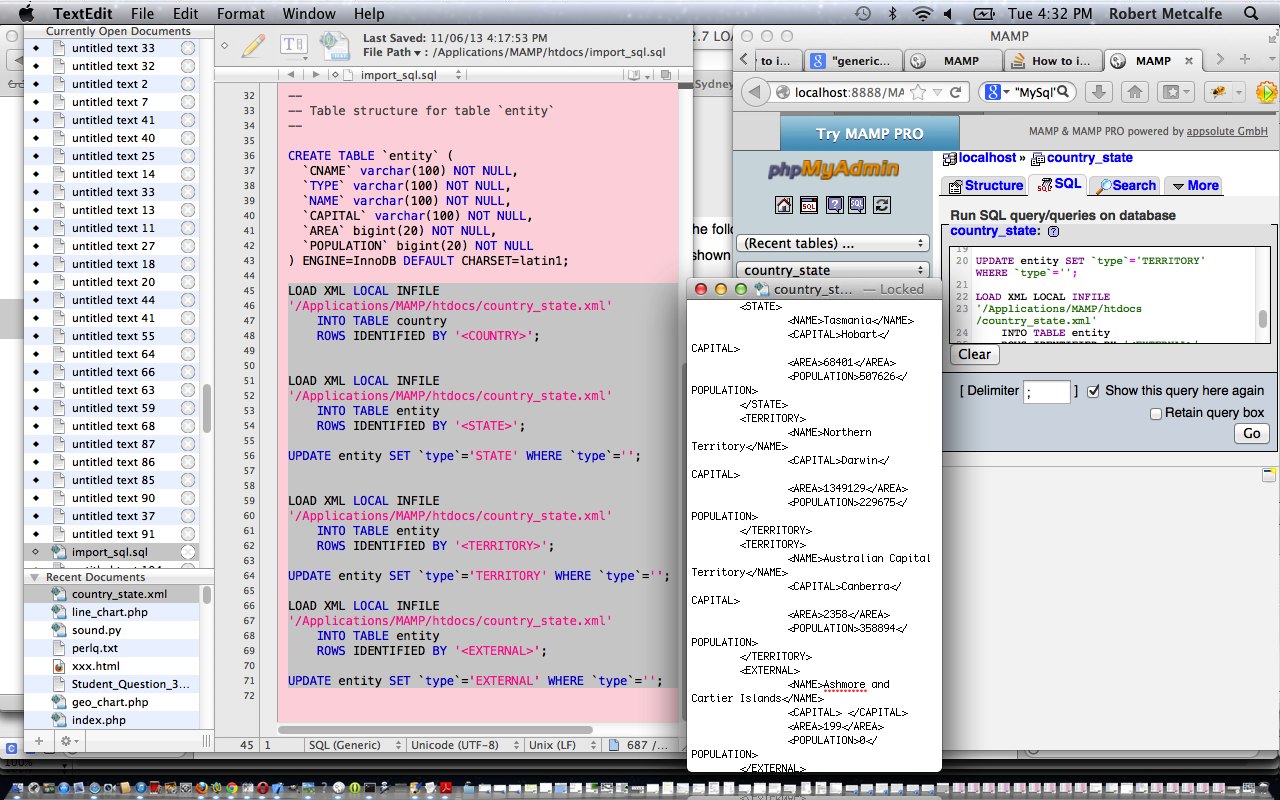MySql is a brilliant database especially when it teams up with its partner in Web excitement … PHP. It also is very friendly with the XML protocol, and, like a lot of other database engines integrates XML into its language. Read about MySql from Wikipedia below:
MySQL (/maɪ ˌɛskjuːˈɛl/ “My S-Q-L”,[3] officially, but also called /maɪ ˈsiːkwəl/ “My Sequel”) is (as of 2008) the world’s most widely used[4][5] open source relational database management system (RDBMS)[6] that runs as a server providing multi-user access to a number of databases. It is named after co-founder Michael Widenius’ daughter, My.[7] The SQL phrase stands for Structured Query Language.[3]
The MySQL development project has made its source code available under the terms of the GNU General Public License, as well as under a variety of proprietary agreements. MySQL was owned and sponsored by a single for-profit firm, the Swedish company MySQL AB, now owned by Oracle Corporation.[8]
MySQL is a popular choice of database for use in web applications, and is a central component of the widely used LAMP open source web application software stack (and other ‘AMP’ stacks). LAMP is an acronym for “Linux, Apache, MySQL, Perl/PHP/Python.” Free-software-open source projects that require a full-featured database management system often use MySQL.
For commercial use, several paid editions are available, and offer additional functionality. Applications which use MySQL databases include: TYPO3, MODx, Joomla, WordPress, phpBB, MyBB, Drupal and other software. MySQL is also used in many high-profile, large-scale websites, including Wikipedia,[9] Google[10][11] (though not for searches), Facebook,[12][13][14] Twitter,[15] Flickr,[16] and YouTube.[17]
You can do a course in MySql, and you can pick things up. MySql and the beautiful incredible phpMyAdmin make this infinitely possible for PHP/MySql web environments.
Take a look at how easy it is to get SQL involved in an XML Import integration idea in MySql … am just using localhost:8889 as a MySql MAMP phpMyAdmin environment, and the tutorial starts showing you this environment.
This tutorial shows you just how good PHP/MySql/phpMyAdmin are, and how breaking things down into common denominators (which is what I class SQL as) is good. By “common denominators” guess what I am saying is “protocols”. In this use of “protocols” in this sense, would include this list (but there are many more):
- SQL
- HTML
- XML
- JSON
- CSV files
- PDF files
Think we need to talk more about “protocols” in weeks to come?!
Click on picture above for the tutorial, on the picture, as usual. Hope you know that clicking on the @ causes the tutorial to be like a movie?! Otherwise use the horizontal scrollbar to move from left to right through the presentation.
Have a great day thinking about data … and those poor neglected but hardworking databases and database engines … or at the beach (but when you’re there think about where each sand grain came from … back to data thoughts?!).
Download XML and SQL for tutorial and rename to country_state.xml and import_sql.sql and tailor for your directory structure etcera etcetera etcetera.
If this was interesting you may be interested in this too.



